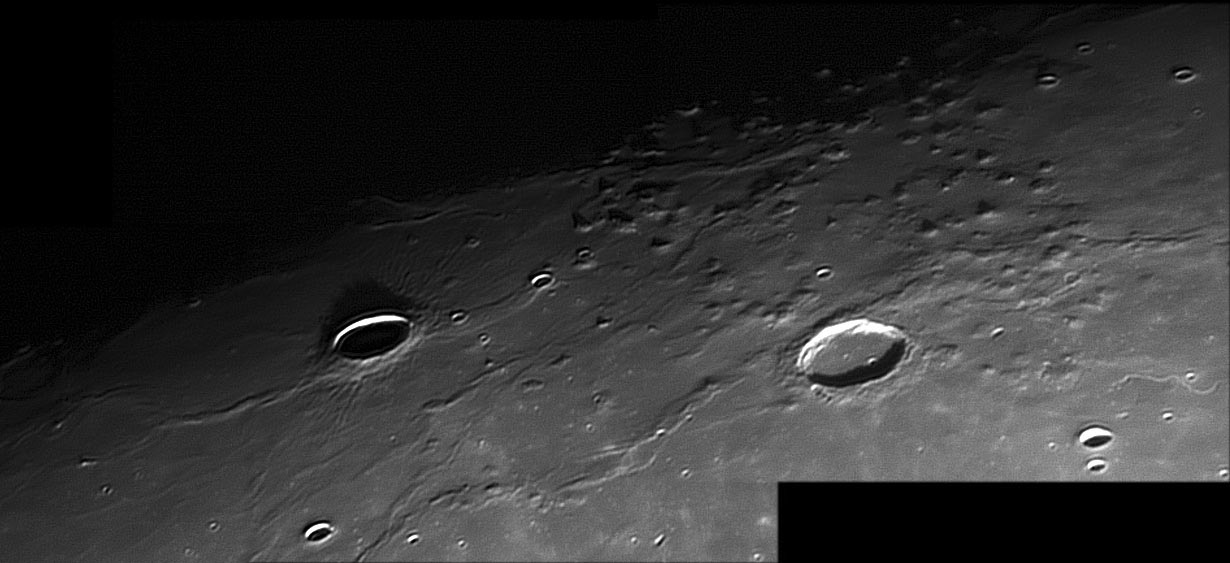Difference between revisions of "November 29, 2012"
| Line 1: | Line 1: | ||
__NOTOC__ | __NOTOC__ | ||
=Bumps in the Night= | =Bumps in the Night= | ||
| − | |||
<!-- ws:start:WikiTextHeadingRule:0:<h1> --> | <!-- ws:start:WikiTextHeadingRule:0:<h1> --> | ||
<!-- ws:start:WikiTextLocalImageRule:6:<img src="/file/view/LPOD-Nov29-12.jpg/387126020/LPOD-Nov29-12.jpg" alt="" title="" /> -->[[File:LPOD-Nov29-12.jpg|LPOD-Nov29-12.jpg]]<!-- ws:end:WikiTextLocalImageRule:6 --><br /> | <!-- ws:start:WikiTextLocalImageRule:6:<img src="/file/view/LPOD-Nov29-12.jpg/387126020/LPOD-Nov29-12.jpg" alt="" title="" /> -->[[File:LPOD-Nov29-12.jpg|LPOD-Nov29-12.jpg]]<!-- ws:end:WikiTextLocalImageRule:6 --><br /> | ||
| − | <em>image by [mailto:gibbidomine@libero.it Raf Lena], Rome, Italy</em><br /> | + | <em>image by [mailto:gibbidomine@libero.it" rel="nofollow Raf Lena], Rome, Italy</em><br /> |
<br /> | <br /> | ||
The Moon has tens of thousands of observable craters, hundreds of rilles, domes and mare ridges, and a handful of unique features. <br /> | The Moon has tens of thousands of observable craters, hundreds of rilles, domes and mare ridges, and a handful of unique features. <br /> | ||
| Line 13: | Line 12: | ||
[http://lpod.wikispaces.com/March+4%2C+2009 Raf's] image you may notice that the cones are quite irregular in shape. For some, the bottom has a gentle slope and the top is steeper. <br /> | [http://lpod.wikispaces.com/March+4%2C+2009 Raf's] image you may notice that the cones are quite irregular in shape. For some, the bottom has a gentle slope and the top is steeper. <br /> | ||
Others have an associated hilly flow. These observations suggest that the Marius Hills had different origins than the generic dome. <br /> | Others have an associated hilly flow. These observations suggest that the Marius Hills had different origins than the generic dome. <br /> | ||
| − | There is spectroscopic evidence for ash at many of the cones so it is likely that explosive eruptions may have built [http://articles.adsabs.harvard.edu/cgi-bin/nph-iarticle_query?1979LPSC...10.2815W&amp;data_type=PDF_HIGH&amp;whole_paper=YES&amp;type=PRINTER&amp;filetype=.pdf lunar equivalents] to <br /> | + | There is spectroscopic evidence for ash at many of the cones so it is likely that explosive eruptions may have built [http://articles.adsabs.harvard.edu/cgi-bin/nph-iarticle_query?1979LPSC...10.2815W&amp;data_type=PDF_HIGH&amp;whole_paper=YES&amp;type=PRINTER&amp;filetype=.pdf" rel="nofollow lunar equivalents] to <br /> |
terrestrial cinder cones. The hilly material surrounding some of the cones is probably viscous lava flows. The gentle slopes at the base <br /> | terrestrial cinder cones. The hilly material surrounding some of the cones is probably viscous lava flows. The gentle slopes at the base <br /> | ||
of other hills may be due to normal dome lavas that are more fluid. So there are two unique features of the Marius Hills - there is a great <br /> | of other hills may be due to normal dome lavas that are more fluid. So there are two unique features of the Marius Hills - there is a great <br /> | ||
| Line 19: | Line 18: | ||
is reasonable, answering is hard.<br /> | is reasonable, answering is hard.<br /> | ||
<br /> | <br /> | ||
| − | <em>[mailto:tychocrater@yahoo.com Chuck Wood]</em><br /> | + | <em>[mailto:tychocrater@yahoo.com" rel="nofollow Chuck Wood]</em><br /> |
<br /> | <br /> | ||
<strong>Technical Details</strong><br /> | <strong>Technical Details</strong><br /> | ||
Revision as of 22:38, 4 January 2015
Bumps in the Night

image by " rel="nofollow Raf Lena, Rome, Italy
The Moon has tens of thousands of observable craters, hundreds of rilles, domes and mare ridges, and a handful of unique features.
Many of the oddities are concentrated in Oceanus Procellarum, including Rümker, the Aristarchus Plateau, Schröter's Valley, and the
Marius Hills. Across the Moon most familar small volcanic cones are standard domes like those near Kies, Hortensius and Cauchy.
These were constructed by eruptions of lava flows from a central vent. Because the lavas were fluid they didn't build steep hills - normal
domes have slopes of only a few degrees. But something makes the steeper-sided cones in the Marius Hills. If you look closely at
Raf's image you may notice that the cones are quite irregular in shape. For some, the bottom has a gentle slope and the top is steeper.
Others have an associated hilly flow. These observations suggest that the Marius Hills had different origins than the generic dome.
There is spectroscopic evidence for ash at many of the cones so it is likely that explosive eruptions may have built " rel="nofollow lunar equivalents to
terrestrial cinder cones. The hilly material surrounding some of the cones is probably viscous lava flows. The gentle slopes at the base
of other hills may be due to normal dome lavas that are more fluid. So there are two unique features of the Marius Hills - there is a great
concentration of volcanoes, and they have more pyroclastics than volcanoes elsewhere on the Moon. Asking why to both of these questions
is reasonable, answering is hard.
" rel="nofollow Chuck Wood
Technical Details
Nov. 25, 2012, 23:28 UT. Mak-Cass 18 cm + Lumenera LU 075M.
Related Links
Rükl plate 29
21st Century Atlas chart 27.



